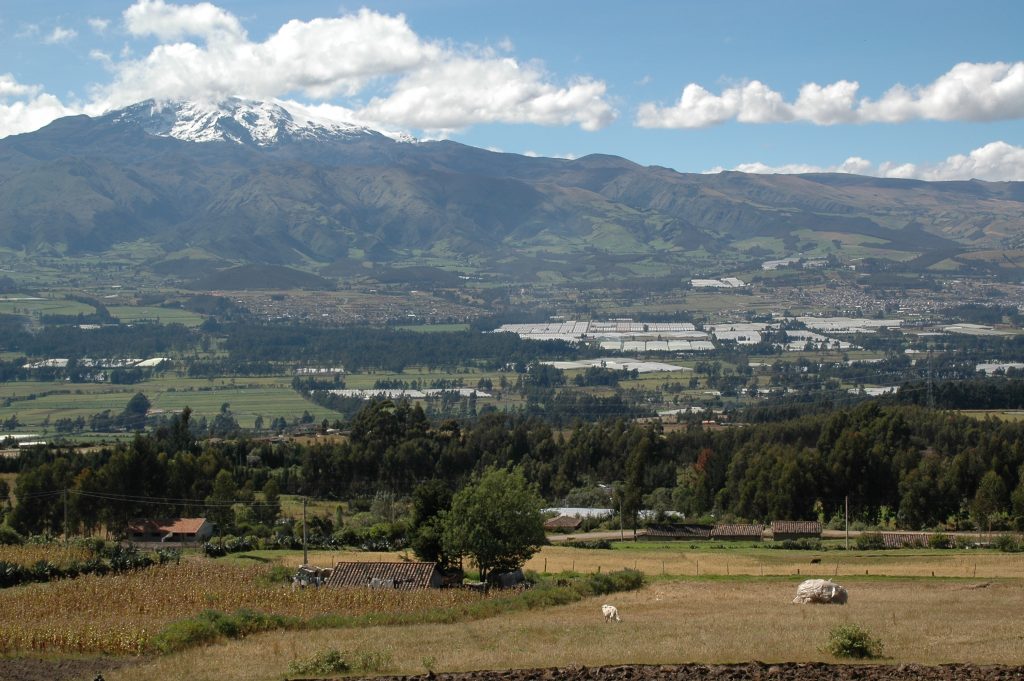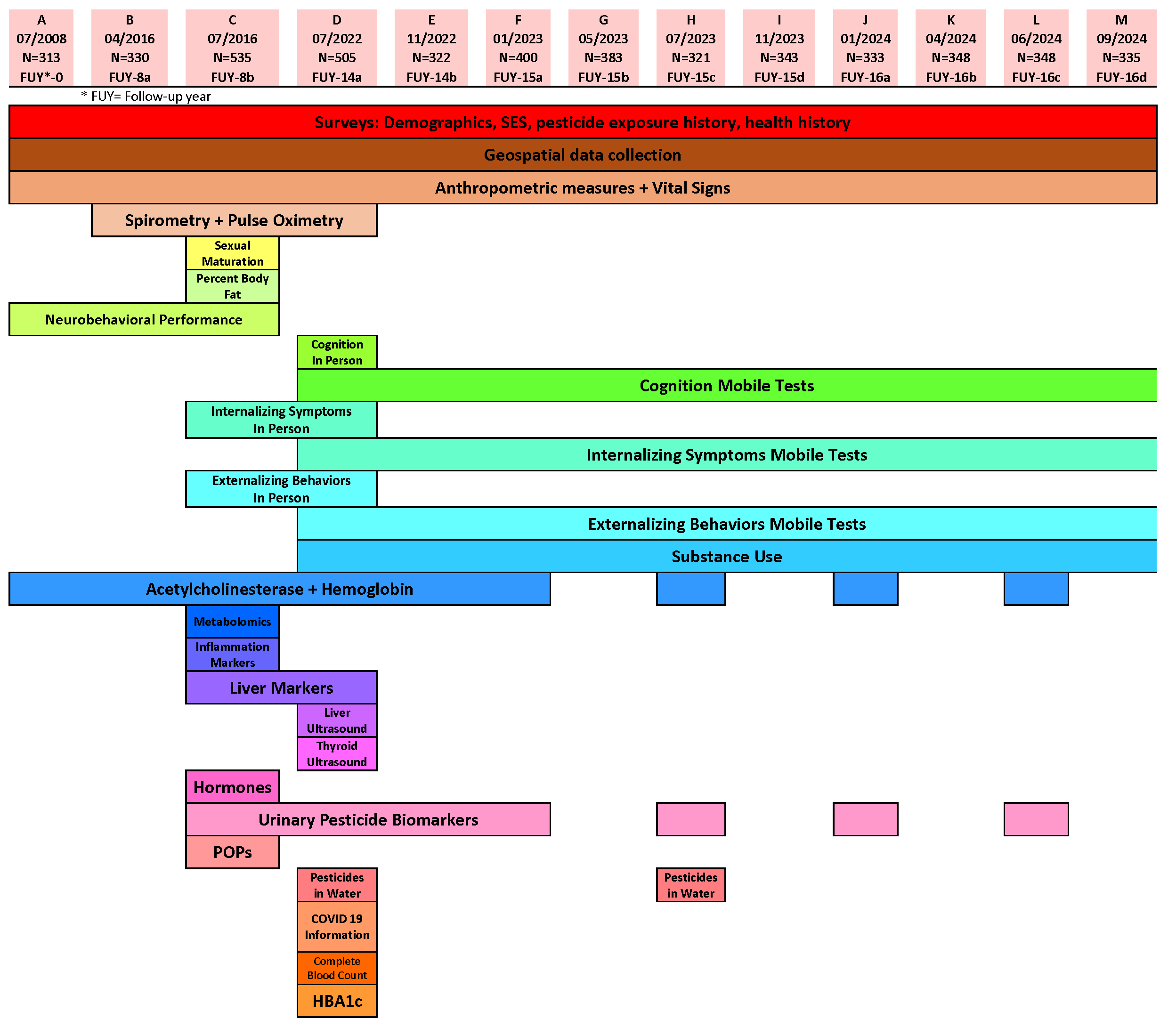Overarching objective: To assess if agrochemical exposures can affect human development evaluated from childhood through adulthood.
Location: Pedro Moncayo County, Ecuador.
ESPINA is a prospective cohort study established in 2008 aimed at understanding the health effects of agrochemical and pesticide exposures, evaluated from childhood into adulthood. This study assesses both short-term (seasonal) and long-term exposure-outcome associations. This study has received funding from the National Institute of Environmental Health Sciences, The National Institute of Occupational Safety and Health and other funding sources. This work has been endorsed by the Commonwealth of Rural Parishes of Pedro Moncayo County and addresses the Pedro Moncayo County Health and Development plans. A list of health outcomes, exposure constructs, and other covariates can be found under “Study Measures”.
Our work includes health assessments including neurobehavior, mental health (internalizing/externalizing), endocrine, inflammation, hemodynamic, respiratory, enzymatic, and metabolomic. We rely on geospatial determinants of exposure as well as blood and urinary markers of exposures to PFAS, PCBs, PBDE flame retardants, DEET, and many pesticides including insecticides (organochlorine, organophosphate, pyrethroid, carbamate, neonicotinoid), herbicides (glyphosate, 2,4-Dichlorophenoxyacetic acid), and fungicides (dithiocarbamate).
Current work: The 14-year follow-up of participants (adolescents and young adults) was completed on the summer of 2022 and we are currently completing the 2023-2024 examinations of the ESPINA-EMCT ancillary study.


